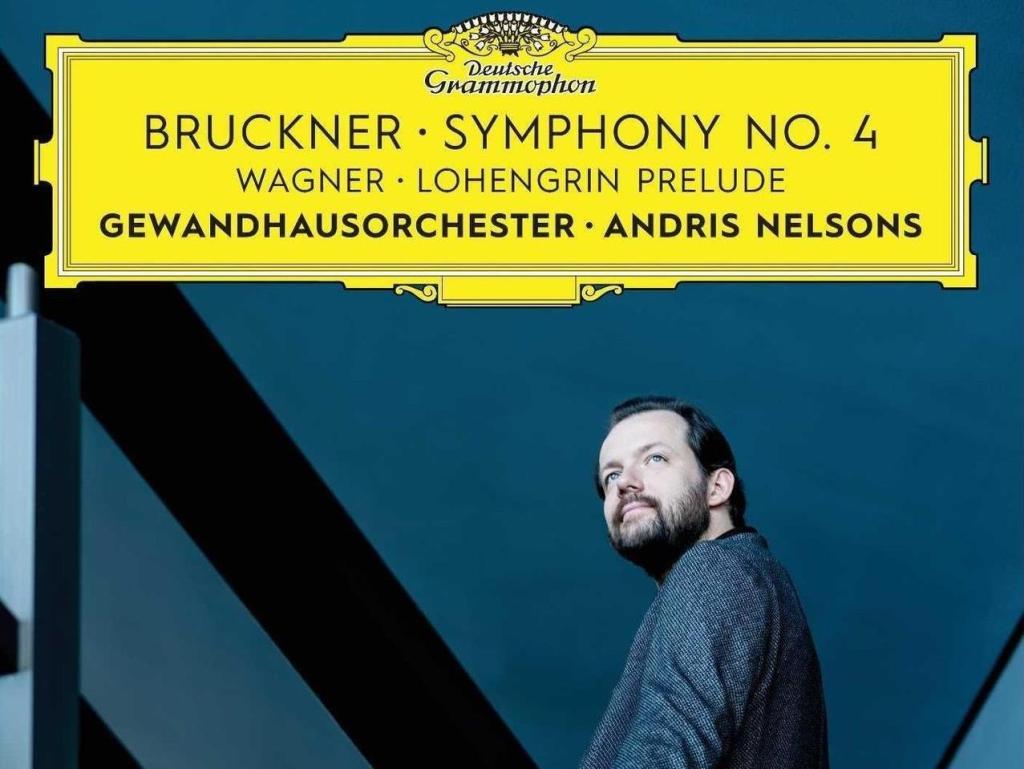Anton Bruckner’s Symphony No 4 in E flat major had a long period of gestation. It presents us with the same complexities for discussion as any one of this composer’s eleven symphonies, namely: Which symphony is it, along with which version? His Symphony No 4 is in fact his sixth symphonic essay in sequence of composition and there are at least seven versions of it, though only three are recognised as major. The subtitle ‘Romantic’ assigned to the work by the composer may be partly explained by the fact that the work is programmatic, filled with nostalgic reference to the medieval world of huntsmen and knights and a love of untamed nature. The titles of two movements referring to a hunting scene and a peasant dance as the hunters pause for lunch further emphasises the bucolic inspiration behind the work.
The Romantic Movement in music reached its apotheosis in the operas of Wagner, particularly his Lohengrin. Its Prelude is also offered on this new release by the Gewandhausorchester under Andris Nelsons recorded live in Leipzig in May, 2017 as part of a Bruckner Symphony Cycle being undertaken by Deutsche Grammophon. The Cycle began with distinction in a profoundly moving version of Symphony No 3 and the present recording only amplifies the affinity between orchestra and repertoire, and the rare chemistry of the artistic partnership with their new Kapellmeister.
Nelsons chooses to record the 1878/1880 version of the work, its first major revision with a new Scherzo, the ‘hunting scene’ and a new Finale the Volksfest. In 1879-1880 the Finale was further revised and it was this version that was eventually first performed in 1881 by the Vienna Philharmonic (who had rejected the work seven years earlier as ‘unplayable’) under Hans Richter. It was the first of Bruckner’s symphonies premiered by a conductor other than himself.
Nelsons opens the first movement Bewegt, nicht zu schnell (lively/animated, but not too fast) with a telling sense of atmosphere and mystery. The descending and ascending fifth horn motif is described by the composer as ‘dawn after a long sleep – a medieval city – from the castle towers sound early morning calls – the gates open – the knights ride forth on their proud steeds – the magic of the forest receives them, with the sounds of rustling leaves and bird calls’. We soon become well acquainted with the repeated ‘Bruckner Rhythm’ (two quavers followed by a triplet) in brilliantly articulated and tuned brass, an orchestral section that is to proudly dominate this symphonic essay, crowning itself with glory in this recording. Morning is also represented by a second song-like theme with shadowed strings and expressive woodwind. This material is interchanged with clear and loving narrative for the remainder of the movement. Excellent rapport and tuning are evident along with a perfectly judged pace for each section.
The trepid second movement in C minor, Andante, quasi allegretto has been described as a distantly remembered funeral march. I see it as more as a Mahlerian, wearily plodding path along life’s journey. Hymn-like, the cellos gently open this rendition, wonderfully accompanied by distant brass calls. The forward momentum is tenderly kept, and Schubert is reverently evoked. The delicacy of expression and subtlety of the strings is noteworthy with a slow evolution into a powerful emotional climax. By contrast the Scherzo. Bewegt (Animated/Lively) – Trio: Nicht zu schnell (Not too fast) entitled ‘Scene from the Hunt’ with its ‘Bruckner Rhythm’ repeated again and again by the prominent brass section is brilliantly performed with spot-on articulation, leading to the charming incidental Ländler (folk dance) Trio.
The Finale: Bewegt, doch nicht zu schnell (Lively, but not too fast), is the longest. Here material from the first three movements is delved into and brought forward in a new and darker context. Again, the string section is outstanding for its nuance and the tutti sound of the ensemble is hugely impressive.
Celebrating it 275th anniversary this year, the Gewandhausorchester has had a long and important association with Bruckner’s symphonies, including the first performance of the Seventh in 1884, a work that was programmed for Nelsons’s inaugural concert in February this year. The Fourth and Seventh Symphonies are now Bruckner’s most often performed, but from these two initial recordings we may justifiably expect a highly significant and rewarding Cycle.
Completing the recording, Wagner’s Lohengrin Prelude is superbly and powerfully understood and conveyed. Feathered and affectionate strings deliver the true Romantic character of the work’s transcendental subject as woodwinds and brass lean in gracefully while the hymn continues with a string descant. Here we are given a subtle yet clearly expressed sense of mortal love measured with an ascetic and sacred charge. This miniature clearly reveals the identity of the greater composer.
★★★★☆
Bruckner Symphony No 4 and Wagner Prelude to Lohengrin
Gewandhaus Orchester
Andris Nelsons, conductor
Deutsche Grammophon
479 7577





